Japanese Maple Winter Dieback – Symptoms Of Japanese Maple Winter Damage


Winter isn’t always kind to trees and shrubs and it is entirely possible, if you live in a region with a cold winter, that you’ll see Japanese maple winter damage. Don’t despair though. Many times the trees can pull through just fine. Read on for information on Japanese maple winter dieback and what you can do to prevent it.
About Japanese Maple Winter Damage
Heavy snow is often the culprit when your slender maple tree suffers broken branches, but winter damage of Japanese maple can be caused by various aspects of the cold season. Often, when the sun is warm in winter, cells in the maple tree thaw during the day, only to refreeze again at night. As they refreeze, they can burst and ultimately die. Japanese maple winter dieback can also be caused by drying winds, scalding sun, or frozen soil. One of the most obvious signs of winter damage of Japanese maple are broken branches, and these often result from heavy loads of ice or snow. They are not the only possible problems though. You may see other types of Japanese maple winter damage, including buds and stems that are killed by the cold temperatures. A tree may also suffer frozen roots if it is growing in a container above the ground. Your Japanese maple may have sunscald of its foliage. The leaves turn brown after they are scalded by bright sunshine in cold weather. Sunscald can also crack open the bark when the temperatures plunge after sunset. Tree bark sometimes splits vertically at the point where the roots meet the stem. This results from cold temperatures near the soil surface and kills the roots and, eventually, the entire tree.
Winter Protection for Japanese Maples
Can you protect that beloved Japanese maple from winter storms? The answer is yes. If you have container plants, winter protection for Japanese maple can be as simple as moving the containers into the garage or porch when icy weather or a heavy snowfall is expected. Potted plant roots freeze much faster than plants in the ground. Applying a thick layer of mulch – up to 4 inches (10 cm.) – over the root area of the tree protects the roots from winter damage. Watering well before winter freeze is also a good way to help the tree survive the cold. That kind of winter protection for Japanese maples will work for any plant in the cold season. You can provide extra protection for Japanese maples by wrapping them carefully in burlap. This protects them from heavy snowfall and frigid winds.
Gardening tips, videos, info and more delivered right to your inbox!
Sign up for the Gardening Know How newsletter today and receive a free download of our most popular eBook "How to Grow Delicious Tomatoes."

Teo Spengler has been gardening for 30 years. She is a docent at the San Francisco Botanical Garden. Her passion is trees, 250 of which she has planted on her land in France.
-
 10 Best Apartment Plants To Turn Your Small Space Into An Oasis
10 Best Apartment Plants To Turn Your Small Space Into An OasisThe best apartment plants can lend an ambience of the tropics, brighten up a space, or add a touch of drama, and turn an apartment into a relaxing oasis.
By Amy Grant
-
 Grow a Bathroom Oasis: 8 Best Bathroom Plants With No Light or Low Light
Grow a Bathroom Oasis: 8 Best Bathroom Plants With No Light or Low LightSome apartment dwellers grow the best bathroom plants with no light or low light. Read how one of our favorite plant lovers does it in the big city.
By Teo Spengler
-
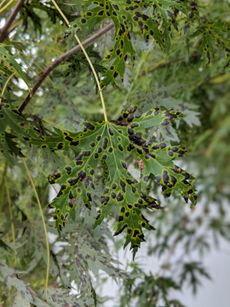 Japanese Maple Tar Spots: Treating A Japanese Maple With Tar Spots
Japanese Maple Tar Spots: Treating A Japanese Maple With Tar SpotsOnce established, Japanese maple plantings usually require little attention from homeowners, with the exception of a few common tree issues – tar spot on Japanese maples being one of these. Learn about treating a Japanese maple with tar spot in this article.
By Tonya Barnett
-
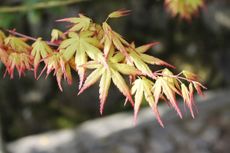 Why Japanese Maple Won’t Leaf Out – Troubleshooting A Leafless Japanese Maple Tree
Why Japanese Maple Won’t Leaf Out – Troubleshooting A Leafless Japanese Maple TreeFew trees are more charming than Japanese maples with their deeply cut, starry leaves. If your Japanese maple won?t leaf out, it?s very disappointing. Leafless Japanese maple are stressed trees, and you?ll need to track down the cause. Click here to learn more.
By Teo Spengler
-
 Japanese Maple Leaf Spot: What Causes Spots On Japanese Maple Leaves
Japanese Maple Leaf Spot: What Causes Spots On Japanese Maple LeavesWith a compact size, interesting foliage, and beautiful colors, Japanese maple can anchor a space and add a lot of visual interest. If you're seeing spots on Japanese maple leaves, though, you may be worried for your tree. Find out what those spots are and what to do about them here.
By Mary Ellen Ellis
-
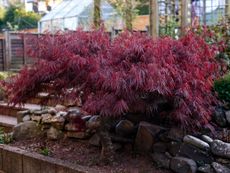 Japanese Weeping Maple Care: Tips For Growing Japanese Weeping Maples
Japanese Weeping Maple Care: Tips For Growing Japanese Weeping MaplesJapanese weeping maple trees are among the most colorful and unique trees available for your garden. And, unlike regular Japanese maples, the weeping variety grows happily in warm regions. Click this article for additional information about Japanese weeping maples.
By Teo Spengler
-
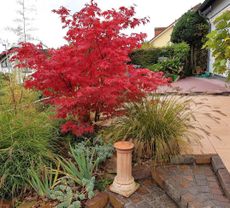 Japanese Maple Feeding Habits – How To Fertilize A Japanese Maple Tree
Japanese Maple Feeding Habits – How To Fertilize A Japanese Maple TreeJapanese maples are garden favorites with their graceful, slender trunks and delicate leaves. To keep your tree happy, you?ll need to site it correctly and apply fertilizer. If you want to learn when and how to fertilize a Japanese maple tree, this article will help.
By Teo Spengler
-
 Japanese Maple Seed Propagation: Tips On Planting Japanese Maple Seeds
Japanese Maple Seed Propagation: Tips On Planting Japanese Maple SeedsJapanese maples have a well-deserved place in the hearts of many gardeners. They are often bought as saplings, but it?s also possible to grow them yourself from seed. Learn more about how to germinate Japanese maple seed in this article.
By Liz Baessler
-
 Coral Bark Maple Trees: Tips On Planting Coral Bark Japanese Maples
Coral Bark Maple Trees: Tips On Planting Coral Bark Japanese MaplesCoral bark maple trees (Acer palmatum "Sango-kaku") are Japanese maples with four seasons of interest in the landscape. Want to learn more about the coral bark tree? Click this article for additional information about this stunning tree.
By Darcy Larum
-
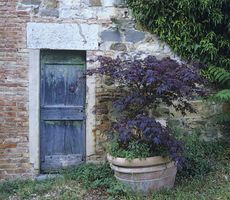 Caring For Potted Japanese Maples – Growing Japanese Maples In Containers
Caring For Potted Japanese Maples – Growing Japanese Maples In ContainersCan Japanese maples be grown in containers? Yes, they can. If you have a porch, a patio, or even a fire escape, you have what you need to start growing Japanese maples in containers. If you are interested in planting a Japanese maple in a pot, click here.
By Teo Spengler